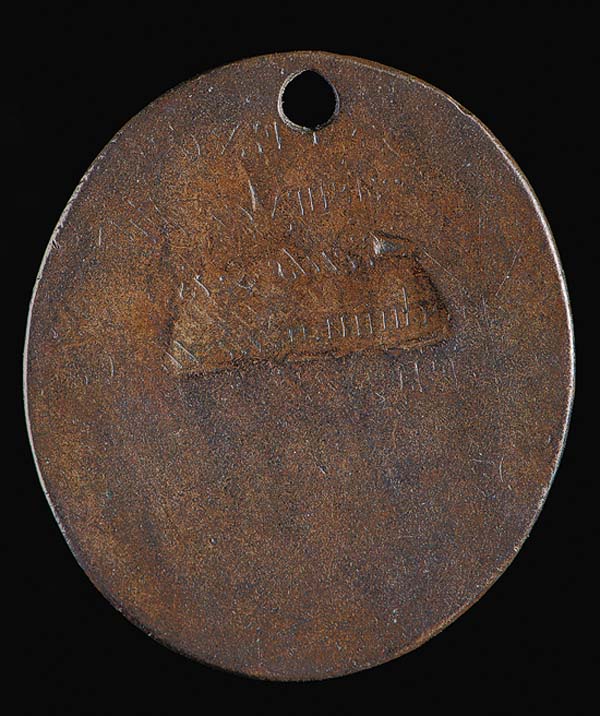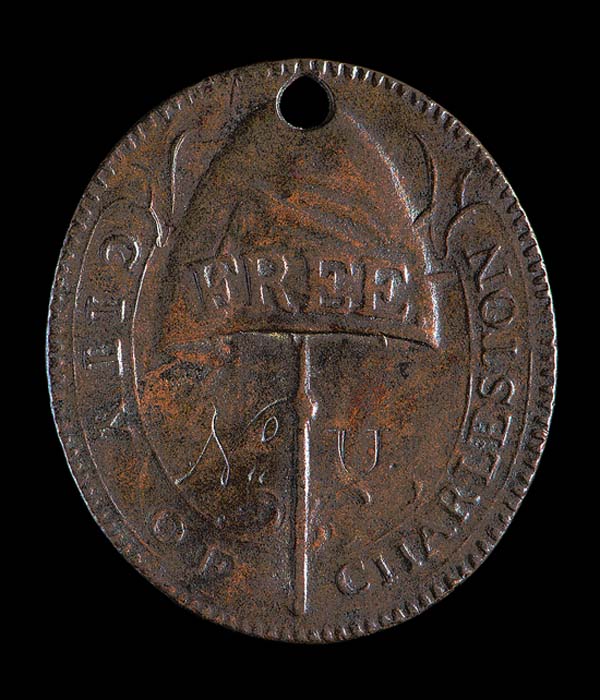Exceptionally Rare Charleston Free Badge Acquired By The Colonial Williamsburg Foundation New Research Shows The Previously Unknown Numismatic Origins Of U And X Badges
August 30, 2024
Weeks after the Revolutionary War ended by the terms of the Treaty of Paris in 1783, the newly incorporated city of Charleston, S.C., began to pass laws. The population of the city was overwhelmingly African American with more than 8,000 people in the community, and the vast majority of them were enslaved; only about 600 were living there as free citizens. Ever fearful of insurrection, the citys administration continued to implement policies designed to constrain the lives of all of its African American residents. An ordinance from Nov. 22, 1783, regulated the employment or hiring out of skilled and unskilled enslaved workers in which an individual went to work for an entity other than their enslaver, who was paid a fee for the service provided. An annual fee of five to forty shillings was to be paid to the city by the enslaver for the right of an enslaved person to be hired out, and a badge or ticket was required to be worn by the laborer. While no examples of slave badges dating to 1783 are known to exist today, 10 free badges from later in the 1780s have been located and are either in private or museum collections. The Colonial Williamsburg Foundation has recently acquired one of these free badges, and it is now on view in the Lowcountry section of the exhibition, A Rich and Varied Culture, in the Nancy N. and Colin G. Campbell Gallery of the DeWitt Wallace Decorative Arts Museum, one of the Art Museums of Colonial Williamsburg. Its an important piece, and an emotional one, said J. Grahame Long, The Colonial Williamsburg Foundations executive director of collections and deputy chief curator. Obviously, its a terrific addition to Colonial Williamsburgs permanent collection, but it goes much further than that. Its a critical component in telling Americas whole story. The Charleston hiring out law did not pertain to enslaved workers only. It went further to affect the free African American population as well by stating: every free negro, mulatto or mestizo living or residing within this City, shall be obliged to register him, her or themselves, in the office of the City Clerk, with the number of their respective families and places of residence every free negro, mulatto, or mestizo, above the age of fifteen years, shall be obliged to obtain a badge from the Corporation of the City, for which badge every such person shall pay into the City Treasury the sum of Five Shillings, and shall wear it suspended by a string or ribband, and exposed to view on his breast. Through these requirements, the city of Charleston levied a fee on the right of free people of color to live and work there, which was a stinging irony when considering the root causes of the American Revolution. The penalties for breaking this law were harsh: failure to comply could cause a free person to be fined 3, which if not paid within 10 days could force the person to the workhouse (jail) and work for up to 30 days. Enslaved individuals caught wearing a free badge were subject to whipping, by up to 39 lashes, followed by an hour in the stocks. I cant help but see the parallels between these 18th-century free badges and the yellow stars worn by Jews during the Holocaust, said Erik Goldstein, Colonial Williamsburgs senior curator of mechanical arts, metals, and numismatics. Both survive as reminders of horrific ideologies, and how humanity must do better going forward. Of the 10 known free badges, with one exception, all are made of copper. Their iconography is misleadingly uplifting: they featured the Phrygian cap and pole, symbolizing the lofty ideals of liberty since ancient times and were rendered in high relief and emblazoned FREE. Each of these badges carries a unique sequential designator as they were intended to be instruments of tracking, control and a revenue source. The badge acquired by Colonial Williamsburg is engraved No.. U, and is part of a succession, possibly limited to 26 or fewer badges with letters instead of numbers. To date, the only other badge inscribed with a letter is No.. X, and the other eight examples are numbered between 14 and 341. Research conducted by Goldstein at Colonial Williamsburg reveals new insights into how these badges were made. What further unites badges U and X are the copper pieces, or planchets, that they were struck on. Both exhibit portions of text engraved in retrograde or mirror image on their backs, showing that they had previously been part of a printing plate relating to money. Once reversed, the readable portions contain words like PENCE, TREASURY, DEPOSIT and RENTS. This detail offers a surprising clue to their numismatic origin; the only paper currency circulating in South Carolina in the 1780s that carried these specific terms were the City of Charlestons emissions of July 12 and Oct. 20, 1786, only current until July 21, 1788. It can therefore be said with certainty that the badges U and X were made of copper recycled from the out-of-date printing plates for these two issues. As of mid-2024, unique examples of only the Two Pence and the Five Shillings & Three Pence bills from the 1786 issues of Charlestons paper money have been recorded. Given that the text engraved on the reverses of badges U and X match neither, they were for the printing of bills of unknown denominations that are not known to survive. The fact that two of the free badges were made from re-used copper printing plates is an exciting discovery, since few printing plates from 18th-century American currency issues survive, in any form. But it also makes sense, using governmentally owned material for an official purpose, said Goldstein. A law passed on June 16, 1789, eliminated both of Charlestons badge programs for African Americans. When the city reimplemented a significantly enlarged system of regulation in 1800, it required the purchase and wearing of badges for enslaved people only. Between then and the end of the Civil War in 1865, more than 187,000 slave badges were made, sold and worn by Charlestons hired out enslaved workers. Though FREE badges were never again mandated by the city, the poor condition of some of the surviving examples suggests they may have been worn well past their obsolescence. It is speculated that their owners sought to display their status as dignified, free individuals in an open and proud manner for all to see.



SHARE
PRINT